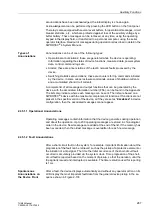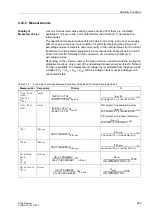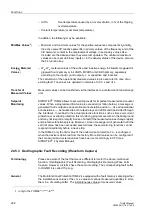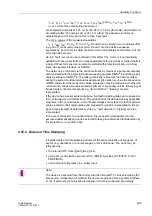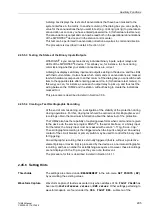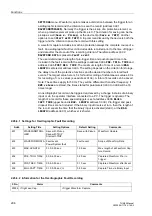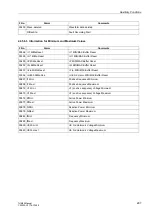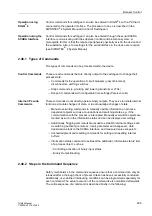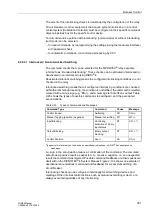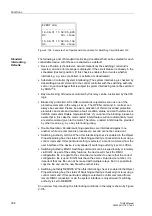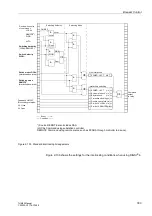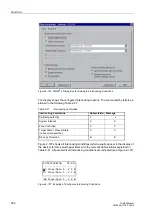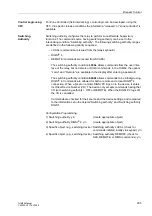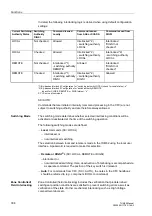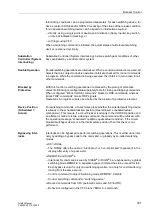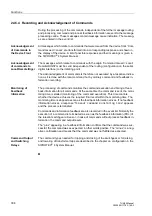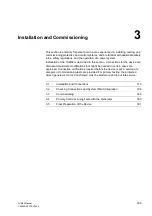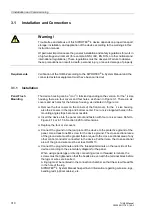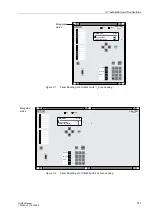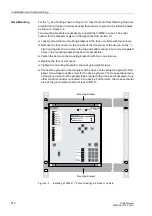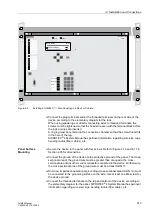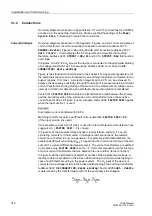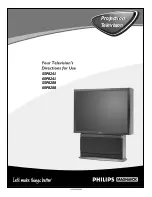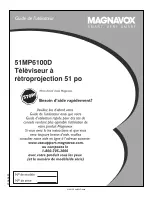
Breaker Control
301
7UM62 Manual
C53000-G1176-C149-3
The extent of the interlocking checks is determined by the configuration of the relay.
Circuit breakers (or other equipment) that require system interlocking in a central
control system (Substation Controller) must be configured in their specific commands
object properties box for the specific control device.
For all commands, operation with interlocking (normal mode) or without interlocking
(test mode) can be selected:
−
for local commands, by reprogramming the settings (using the local user interface)
with password check,
−
for automatic commands, via command processing by CFC.
2.46.3.1 Interlocked / Non-Interlocked Switching
The command checks that can be selected for the SIPROTEC
®
relays are also
referred to as ”standard interlocking”. These checks can be activated (interlocked) or
deactivated (non interlocked) using DIGSI
®
4.
Deactivated interlock switching means the configured interlocking conditions are not
checked in the relay.
Interlocked switching means that all configured interlocking conditions are checked
within the command processing. If a condition is not fulfilled, the command is rejected,
marked with a minus sign (e.g. ”
CO–
”), and a message to that effect is output. Table
2-20 shows the types of possible commands to switchgear, and the associated
annunciations.
*)
appear in this form only on the device as operational indications, in DIGSI
®
4 as spontaneous
messages.
A + sign in the annunciation means a confirmation of the command. The command
output has a positive result, as expected. A – means a negative, i.e. an unexpected
result; the command was rejected. Possible command feedbacks and their causes are
dealt with in the SIPROTEC
®
4 System Manual. Figure 2-134 shows an example of
operational annunciations (command and feedback) for successful switching of a
circuit breaker.
Interlocking checks can be configured individually for all switching devices and
markings. Other internal control actions, such as manual overwriting or abort, are
always executed regardless of any interlocking.
Table 2-20
Types of Commands and Messages
Command Type
Command
Cause
Message
Control Issued
Switching
CO
CO+/–
Manual Tagging (positive / negative)
Manual overwriting
MT
MT+/–
Input Blocking
Controlling
activation of binary
input status
ST
ST+/– *)
Output Blocking
Binary output
blocking
ST
ST+/– *)
Control Abortion
Abort
CA
CA+/–

